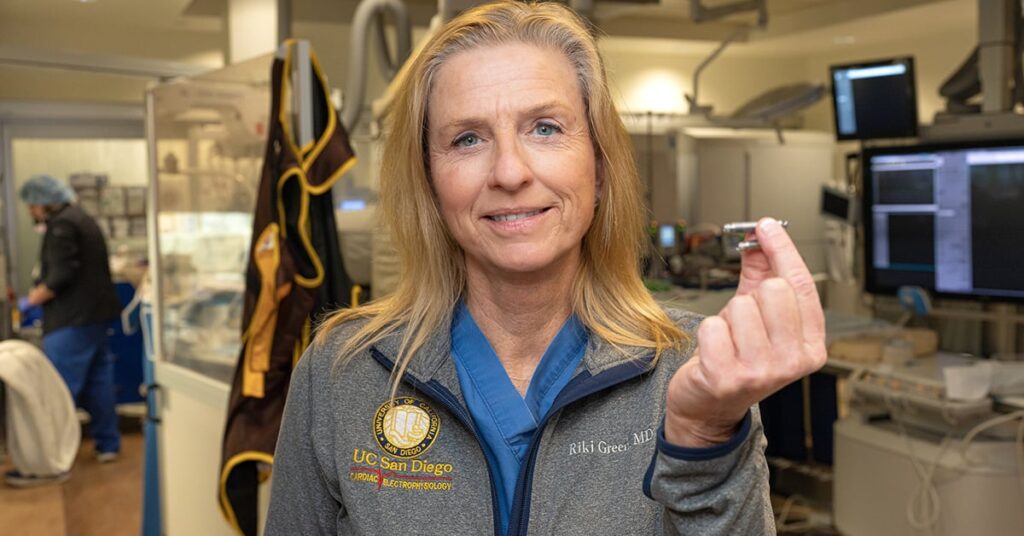UC San Diego Health implants the world's first dual-chamber and leadless pacemaker system to help treat people with irregular heart rhythms known as arrhythmias, which can lead to complications such as palpitations, fainting, and stroke It is the first health care system in San Diego to succeed.
The Centers for Disease Control and Prevention estimates that atrial fibrillation, the most common arrhythmia, is expected to affect approximately 12.1 million people in the United States by 2030. Pacemakers and implantable cardioverter defibrillators (ICDs) are standard treatments for regulating irregular heartbeats in patients.
A new leadless pacemaker system placed in both chambers of the heart and using new communication technology, approved by the U.S. Food and Drug Administration (FDA) in July 2023, could offer a less invasive option for patients. became.
UC San Diego implanted its first patient with a pacemaker system in February 2024.
“Having the option to use a leadless pacemaker system on both sides of the heart would allow us to treat more people who currently have cardiac arrhythmias,” said Dr. McConlogue, a cardiologist and director of pacemaker and ICD services at the University of California, Sun. said Dr. Ulrika Birgersdotter-Green, the person in charge. Diego Health.
Almost 80% of patients with pacemakers require a dual chamber option. Leadless pacemakers are a preferred option for patients, but historically they were only available to people who needed pacing on one side of the heart.
“The new system consists of two devices: one in the atrium, or upper right ventricle, and one in the ventricle, or lower right ventricle,” Green said. “The two devices then communicate with each other through the heart's natural circulatory system, which controls heartbeats.”
Traditional pacemakers and ICDs require leads, or thin wires, that carry electrical signals within a patient's heart and blood vessels. The leads are connected to a battery-powered generator and are implanted under the skin, usually below the collarbone. The burst of energy can cause the heart to beat faster (in the case of a pacemaker) or stop the dangerously rapid heart rhythm (in the case of an ICD).
The new system is about the size of a AAA battery, has no leads and no generator, and can be delivered through a catheter and implanted directly into the heart without the need for a surgical “pocket” under the skin. It's small enough. , making it a less invasive approach for the patient.
“Leadless pacemakers are considered the future in the treatment of cardiac arrhythmias, allowing many patients to go about their daily lives without visible evidence of a pacemaker or cardiac device,” Birgersdotter-Green he said.
The surgery will be performed in the region's first hybrid, state-of-the-art operating room at UC San Diego's Sulpizio Heart and Vascular Center. Pacemaker systems can be removed and replaced at any time if a patient's treatment requirements change.
“This advancement for patients in need of cardiovascular care is the result of an extraordinary multidisciplinary electrophysiology team at the University of California, San Diego,” added Birgersdotter-Green.
UC San Diego Health's board-certified electrophysiologists perform the nation's largest volume of device implantation, cardiac ablation, and laser lead extraction, using minimally invasive surgical techniques to provide advanced remote monitoring of devices .
As part of the region's only academic health system, UC San Diego's Heart and Vascular Institute is a center of discovery and innovation. Our heart and vascular program is ranked in the top 25 in the nation. US News & World Report.


